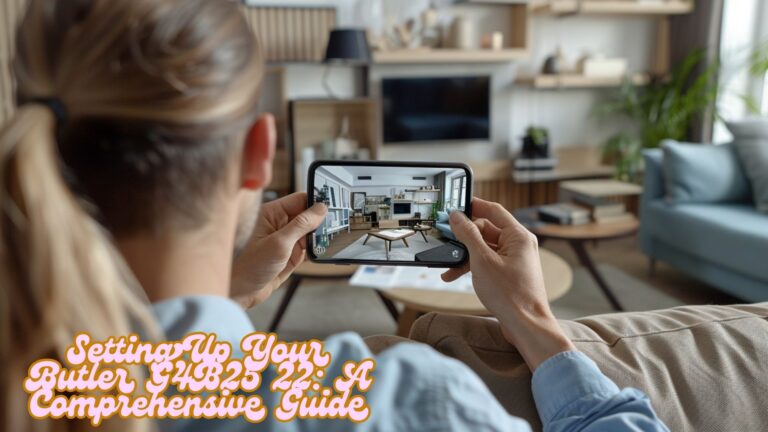
absographics.com blog
Are you ready to take your absographics.com blog posts from good to great? Whether you’re a seasoned writer or just starting out, crafting high-quality content that captivates your audience is crucial in today’s digital landscape. In this step-by-step guide, we’ll unlock the secrets to optimizing your blog posts for maximum impact and visibility. From eye-catching headlines that draw readers in, to strategic SEO techniques that boost your search engine ranking, we’ve got all the essential tips and tricks you need! So grab your notebook and get ready to transform your blogging game—let’s dive into the world of optimization and watch those views soar!
Introduction: Why optimizing your blog posts is important for your blog’s success
In the ever-evolving world of digital marketing, a well-optimized blog can be your golden ticket to success. If you’re running an absographics.com blog, understanding how to optimize your posts is crucial for attracting readers and improving your visibility online.
But why should you care about optimization? The answer lies in search engine rankings. Higher placements mean more traffic, which translates into increased engagement and potentially higher conversions. Whether you’re sharing valuable insights or showcasing products, optimized content ensures that your hard work doesn’t go unnoticed.
With millions of blogs competing for attention on the internet today, mastering the art of optimization is no longer optional—it’s essential. Let’s dive into a step-by-step guide that will transform your approach to blogging and help elevate your absographics.com content to new heights!
Understanding SEO and its key elements for blog optimization
SEO, or Search Engine Optimization, is the backbone of any successful blog. It determines how easily your content can be discovered by readers on search engines like Google.
Key elements include keyword usage, site structure, and link building. Keywords are essential; they help search engines understand what your post is about. Selecting relevant keywords ensures that you attract the right audience.
Site structure plays a critical role as well. A clean layout improves user experience and encourages visitors to stay longer on your page. This engagement signals to search engines that your content is valuable.
Link building enhances credibility too. Internal links guide users through related content while external links connect you with authoritative sources, boosting trustworthiness in the eyes of both readers and search engines alike.
Mastering these components can significantly elevate the visibility of your absographics.com blog posts in a competitive digital landscape.
Step 1: Conducting Keyword Research
Keyword research is the foundation of effective blog optimization. It starts with understanding what your audience is searching for. By identifying relevant keywords, you can align your content with their needs.
Utilizing tools like Google Keyword Planner or Ubersuggest helps uncover popular search terms in your niche. These platforms provide insights into search volume and competition levels, guiding you toward valuable keywords.
Long-tail keywords are particularly powerful. They’re more specific phrases that attract a targeted audience ready to engage. For instance, instead of targeting “fitness,” consider “home workout routines for beginners.” This strategy not only improves visibility but also enhances user relevance.
When selecting keywords, think about intent as well. Are users seeking information or looking to make a purchase? Matching your chosen keywords with user intent will increase the chances of attracting quality traffic to absographics.com blog posts.
Tools and techniques for finding relevant keywords
Finding relevant keywords is the first step to optimizing your absographics.com blog. Several tools can streamline this process and enhance your content strategy.
Google Keyword Planner is a classic choice. It offers insights into search volume and competition for various terms. This tool helps you identify popular keywords in your niche.
Another excellent resource is Ubersuggest, which provides keyword suggestions along with data on related searches. Its user-friendly interface makes it easy for beginners to grasp essential metrics quickly.
Don’t overlook AnswerThePublic, either. This tool visualizes common questions people ask around specific topics. It can spark ideas that resonate with your audience’s interests.
Using social media platforms like Twitter or Reddit can also reveal trending topics and phrases that are gaining traction within your community. These conversations can guide you toward timely and relevant keywords for your next post.
Choosing the right keywords for your content
Choosing the right keywords is crucial for your content’s visibility. Start by aligning the keywords with your blog’s theme and audience interests.
Think about what questions your readers might ask. This approach helps you discover phrases that resonate with them.
Consider search intent as well. Are users looking for information, or are they ready to make a purchase? Your chosen keywords should reflect this intention.
Use tools like Google Keyword Planner or Ubersuggest to analyze search volume and competition levels. High-volume keywords can be tempting, but don’t overlook niche terms that may have lower traffic yet less competition.
Balance broad terms with specific long-tail options too. These often lead to higher conversion rates as they target a more defined audience segment seeking precise solutions or insights related to absographics.com blog topics.
– Using long-tail keywords to target a specific audience
Long-tail keywords are game-changers for your content strategy. Unlike generic terms, these phrases are more specific and often reflect what users actually type into search engines.
For instance, instead of targeting “blogging tips,” you might opt for “blogging tips for beginners.” This approach narrows down the audience significantly. It attracts readers who are at the beginning of their journey and seeking targeted advice.
Additionally, long-tail keywords tend to have lower competition. This means you’re more likely to rank higher on search engine results pages when using them strategically throughout your blog posts.
Incorporating these keywords naturally within your content helps improve relevance and user engagement. They also assist in building a loyal readership by addressing niche topics that resonate deeply with your target audience’s needs.
Step 2: Optimizing Your Blog Post Title and URL
Crafting an effective blog post title is crucial for grabbing attention. It should be both engaging and informative, integrating relevant keywords without sounding forced. Consider phrases that spark curiosity or provide solutions.
A clean URL structure enhances user experience and boosts SEO. Aim for simplicity by keeping it short and descriptive. For instance, instead of a lengthy string of numbers, use words from your title to create clarity.
Incorporating keywords in both the title and URL helps search engines understand your content better. Remember to avoid keyword stuffing; natural language resonates with readers while still signaling relevance to algorithms.
Finally, don’t forget about readability. A catchy title combined with a straightforward URL not only improves click-through rates but also establishes trust with your audience right from the start.
Tips for writing attention-grabbing titles that include keywords
Crafting an attention-grabbing title is essential for drawing readers in. Start by placing your primary keyword at the beginning. This not only boosts SEO but also signals what your post is about right away.
Consider using numbers or questions to pique curiosity. Titles like “5 Ways to Optimize Your absographics.com Blog” or “How Can You Boost Your Blog’s Visibility?” invite clicks.
Keep it concise—aim for 60 characters or fewer. Short titles are easier to read and remember, making them more effective on social media platforms.
Adding a touch of urgency can make a difference too. Phrases like “Don’t Miss Out” or “Act Now” encourage immediate action from potential readers.
Lastly, ensure your title accurately reflects the content of your post. Misleading titles may attract clicks initially, but they won’t keep readers engaged long-term. Authenticity builds trust with your audience.
Importance of having a clean and concise URL structure
A clean and concise URL structure plays a crucial role in optimizing your absographics.com blog. It enhances user experience by making links easy to read and understand. Visitors are more likely to click on URLs that clearly indicate what they can expect from the content.
Search engines also favor straightforward URLs, as they help crawl and index your site more efficiently. Including relevant keywords in your URL can provide additional context, improving visibility in search results.
Short, descriptive URLs are easier to share across platforms. They look professional and build trust with your audience. Avoid unnecessary parameters or vague terms; simplicity is key.
When crafting a URL, think about the journey you want readers to take. A well-structured link not only guides users but also signals authority within search engine algorithms, boosting overall rankings for your blog posts.
Step 3: Crafting High-Quality Content with SEO in Mind
Creating high-quality content is essential for attracting and retaining readers. Start with an engaging introduction that hooks the audience right away. This sets the stage for your blog post.
Don’t overlook meta descriptions either. A well-crafted description can significantly increase click-through rates from search engines. Make it compelling, informative, and succinct.
Utilize headings and subheadings to structure your content effectively. They guide readers through your post while making it easier for search engines to understand context.
Incorporate bullet points where necessary; they help break up text and make information digestible at a glance.
Remember to weave in relevant keywords naturally without forcing them into sentences. The flow of your writing should feel smooth, not robotic or stuffed with terms.
Lastly, always keep the reader’s experience in mind; valuable content keeps them coming back for more insights on absographics.com blog topics.
Writing engaging introductions and meta descriptions
An engaging introduction sets the stage for your readers. It draws them in and piques their interest right from the start. Begin with a compelling hook—a question, a surprising fact, or an intriguing statement that resonates with your audience.
Your meta description is equally crucial. This brief summary appears on search engine results pages and can significantly influence click-through rates. Aim for clarity and relevance while incorporating your main keyword naturally.
Keep it concise—ideally between 150-160 characters—to ensure it displays fully in search results. Use action words to encourage readers to take that next step: “Discover,” “Learn,” or “Explore.”
By crafting captivating introductions alongside well-thought-out meta descriptions, you not only enhance user experience but also boost the visibility of your absographics.com blog posts in search rankings.
Using headings, subheadings, and bullet points to improve
Using headings, subheadings, and bullet points to improve readability is essential for effective blog optimization. Break up your content into manageable sections. This approach not only enhances the flow but also allows readers to scan quickly.
Headings guide them through the post and highlight key points. Subheadings create a structured format that makes it easier for readers to digest information without feeling overwhelmed.
Bullet points are particularly useful for summarizing important facts or lists succinctly. They grab attention and make complex details more accessible.
Remember, an organized layout keeps visitors engaged longer on your site—crucial for boosting SEO rankings on search engines like Google. By considering these elements in your writing process, you elevate both user experience and performance of absographics.com blog posts significantly.
Optimizing your blog isn’t just about getting noticed; it’s about creating value that resonates with your audience genuinely while enhancing visibility online.






